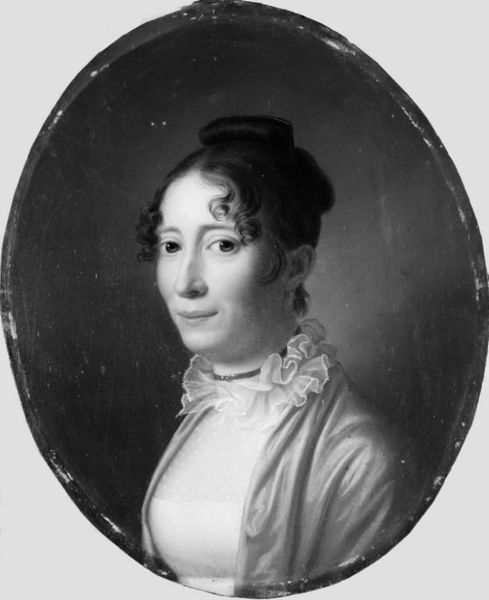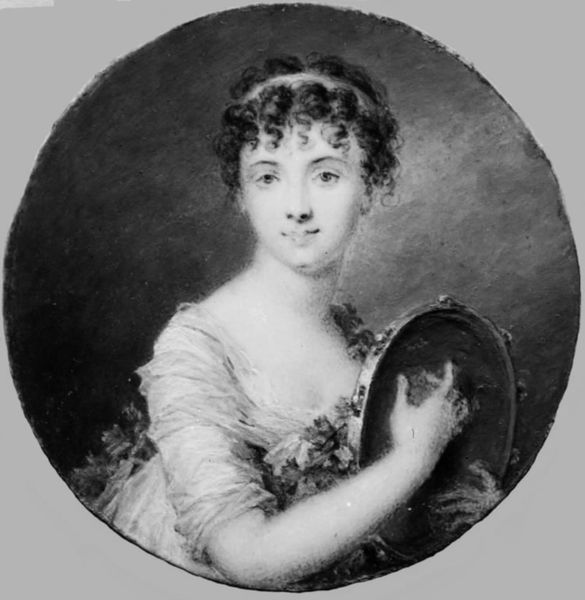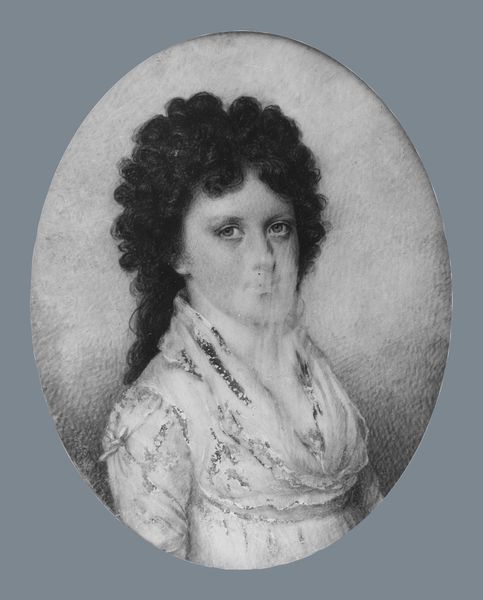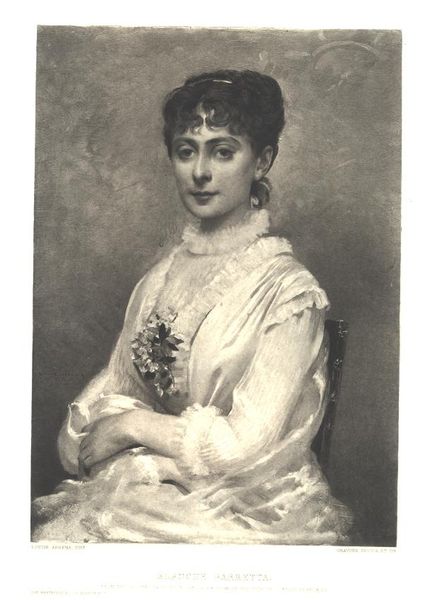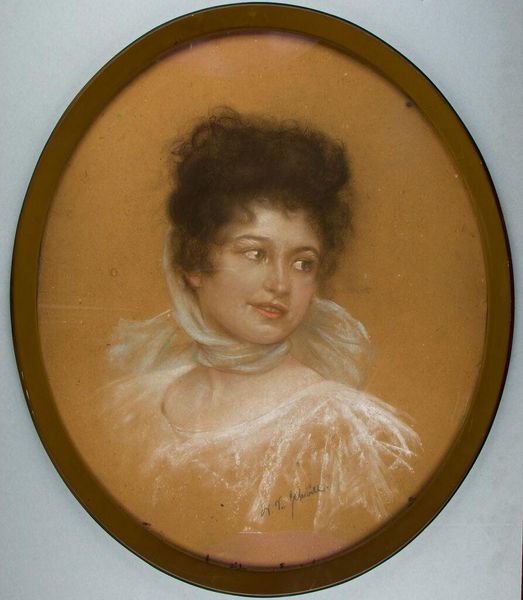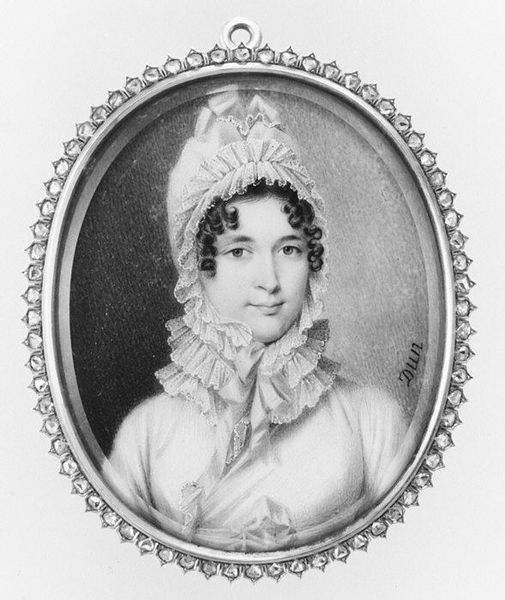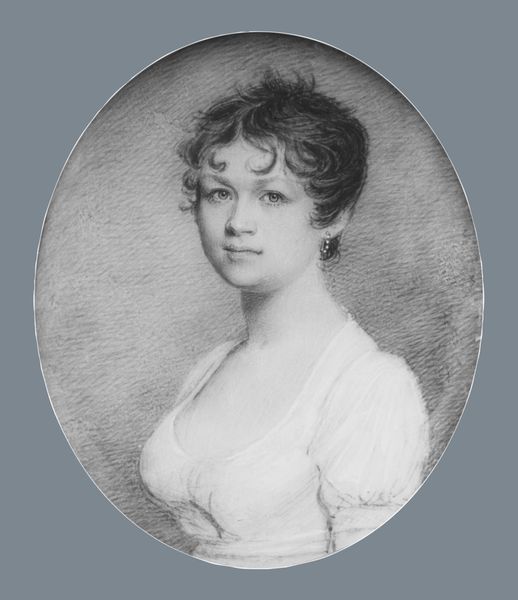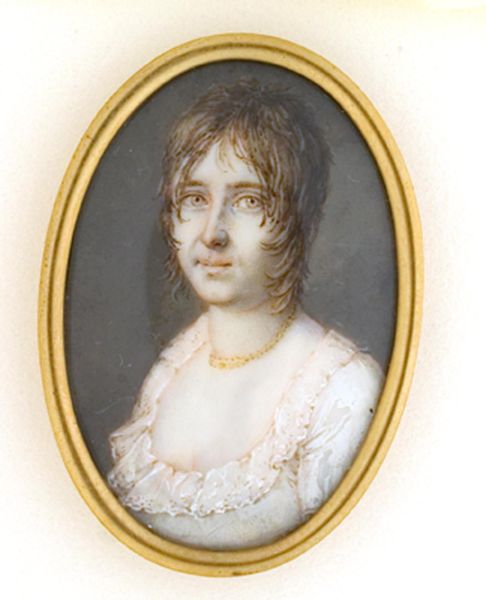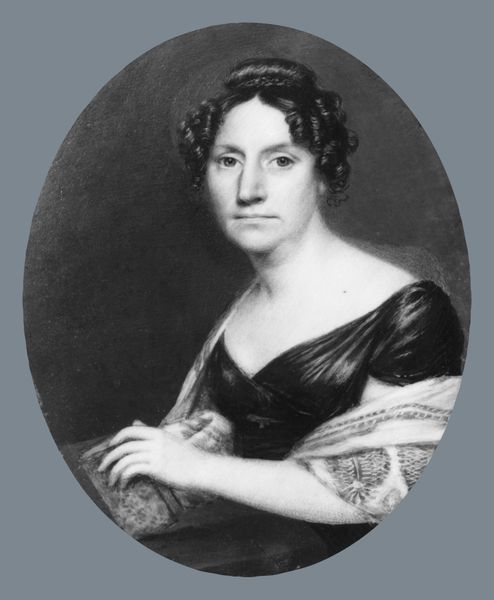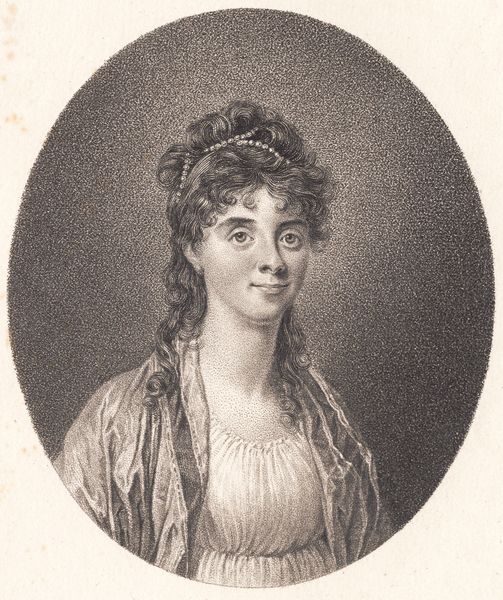
drawing
#
portrait
#
drawing
#
portrait image
#
portrait
#
portrait reference
#
romanticism
#
single portrait
#
miniature
Dimensions: 8.7 cm (height) x 7.2 cm (width) (Netto)
Liepmann Fraenckel painted this miniature portrait of Fru Esther Nathanson in Denmark during the first half of the 19th century. Consider the social context of portraiture at this time. Who was typically represented and why? This intimate image, likely commissioned by the sitter or her family, speaks to the rise of a prosperous Jewish merchant class in Copenhagen. Despite ongoing legal restrictions and social discrimination, some Jewish families attained considerable wealth and standing, reflected in their patronage of the arts. Here, Esther Nathanson is carefully posed and dressed in the height of bourgeois fashion. Her pearl necklace and elaborate hairstyle signal her social status. We can consider this miniature as a carefully constructed representation of identity within a specific social and historical context. To learn more, look into the history of Jewish communities in Denmark, the biography of Liepmann Fraenckel, and the fashion trends of the early 19th century. These research avenues can help us better understand the nuances of this captivating portrait.
Comments
No comments
Be the first to comment and join the conversation on the ultimate creative platform.
